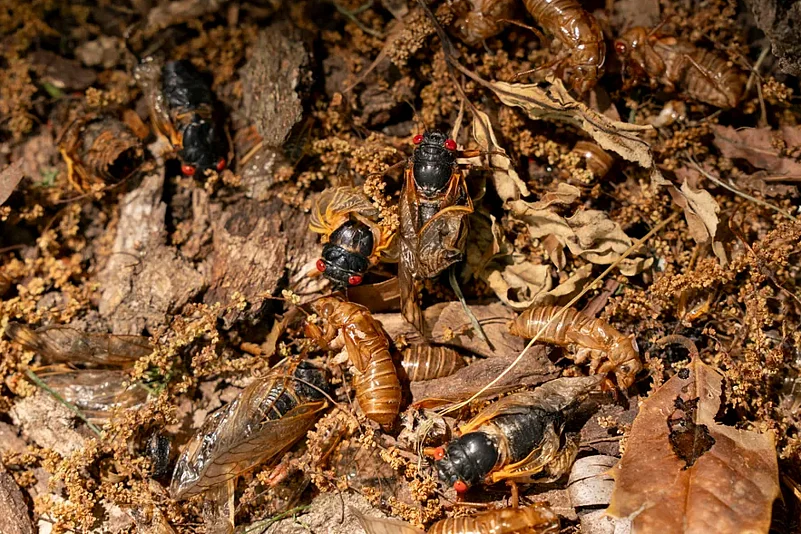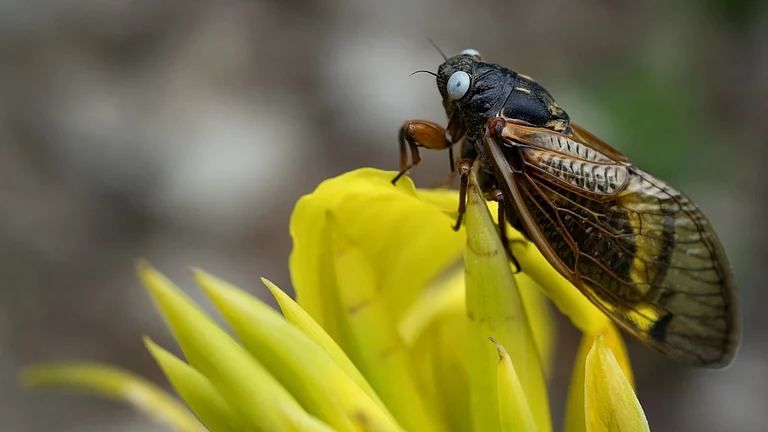Curious about where trillions of Cicadas are appearing across US? Check out the 2024 Cicada Map to locate Broods XIII and XIX and get the latest updates on their emergence. These periodical cicadas are currently making their presence known across nearly 20 U.S. states in the Southeast and Midwest.
Cicadas 2024 Map: Everything About The Rare Double Emergence Of Broods XIII And XIX Across U.S. States
Explore the 2024 Cicada Map to track Broods XIII and XIX as they emerge across nearly 20 U.S. states, marking a rare event not seen in 221 years and not anticipated until 2245.

This year, the emergence of these cicadas is a rare occurrence, with both 13-year Brood XIX, mainly in the Southeast, and 17-year Brood XIII, in the Midwest, making their appearance. It's been 221 years since these two broods emerged simultaneously, and they're not expected to do so again until 2245.
The rare double brood event has resulted in trillions of cicadas emerging across states, spanning from Oklahoma to Wisconsin to North Carolina and beyond.
Thanks to favorable conditions and warm soil temperatures, cicadas from both broods have already emerged in full force above ground.
Here's where you can spot cicadas emerging above ground in 2024.
2024 Cicada Map: Here's where Broods XIII, XIX are Expected to Emerge
The two cicada broods are projected to emerge across a total of 17 states in the South and Midwest. Their emergence typically begins when the soil eight inches below the surface reaches a temperature of 64 degrees Fahrenheit, starting in numerous states from April to May and extending into late June.
The last time the two broods emerged together was in 1803, during the presidency of Thomas Jefferson.

Where have the Cicadas already come out in 2024?
In 2024, adult periodical cicadas from Brood XIX have already completed their emergence and are now fully present in states across the Midwest and Southeast, as reported by Cicada Safari, a cicada tracking app developed by Mount St. Joseph University in Cincinnati, Ohio.
The Cicada Safari app has reported sightings of Brood XIX cicadas in Alabama, Arkansas, Georgia, Illinois, Kentucky, Maryland, Mississippi, Missouri, North Carolina, Oklahoma, South Carolina, Tennessee, and Virginia.
Meanwhile, Brood XIII has begun its emergence in Wisconsin, Iowa, Indiana, and across the Chicago area, as well as in central and northern Illinois near Peoria and Champaign, according to the tracking service.
What is a Brood?
A brood, as defined by the University of Connecticut, encompasses "all periodical cicadas of the same life cycle type that emerge in a given year."
Within a brood, various species of cicadas with distinct evolutionary backgrounds are included. These species might have joined the brood at different points or originated from diverse sources. Despite their differences, these species are grouped together within the brood because they inhabit the same geographic region and adhere to a synchronized emergence schedule.
Once male and female periodical cicadas have completed mating and the females have laid their eggs, these insects will die after spending only a few weeks above ground. This lifespan typically ranges from three to six weeks after their initial emergence.
This means that many of the periodical cicadas emerging this year are expected to die off in June, although some may die as early as late May or as late as July, depending on their emergence timing.
According to the Missouri Department of Conservation, the nymphs of annual cicadas remain underground for a period of two to five years. These cicadas are termed "annual" because some individuals of the species emerge as adults every year.

Cicadas Life Cycle
The duration of time that cicadas spend above ground varies depending on their brood and whether they belong to an annual or periodical species.
This summer, there are two periodical broods: Brood XIX, with a 13-year life cycle, and Brood XIII, with a 17-year life cycle.
Why are Cicadas so loud?
The cacophony of noise produced by cicadas can largely be attributed to the male members of the species. Male cicadas synchronize their calls to create congregational songs, a behavior outlined by Britannica. These calls serve to establish territory and attract females. Additionally, male cicadas emit a courting call before mating.
Among cicadas, the periodical 13-year and 17-year broods are particularly loud, in part due to the large number emerging at once.
- Previous Story
 US Elections 2024: Tim Walz, JD Vance To Go Head-To-Head In VP Debate | Key Issues To Watch Out For
US Elections 2024: Tim Walz, JD Vance To Go Head-To-Head In VP Debate | Key Issues To Watch Out For - Next Story




























